Neighborhood grocery stores. Remember them? Not that long ago, before big-box chain supermarkets, chain dollar stores, and chain convenience stores, every neighborhood had at least one grocery store. Often they were on a corner. Sometimes beside an alley at midblock. Often they were tiny, no larger than the houses that surrounded them. Sometimes the proprietor lived in the same building. Many stores didn’t have a parking lot: Customers arrived on foot, on bicycle, on a streetcar or a bus. After they arrived they could get paper bags, credit, a greeting by name, and two cents back on pop bottles.
Here, in two parts, are some buildings that yoostabe neighborhood grocery stores. (At the bottom of Part 2 is a city directory listing of retail grocers in Fort Worth in 1920 when most grocery stores were neighborhood grocery stores.)
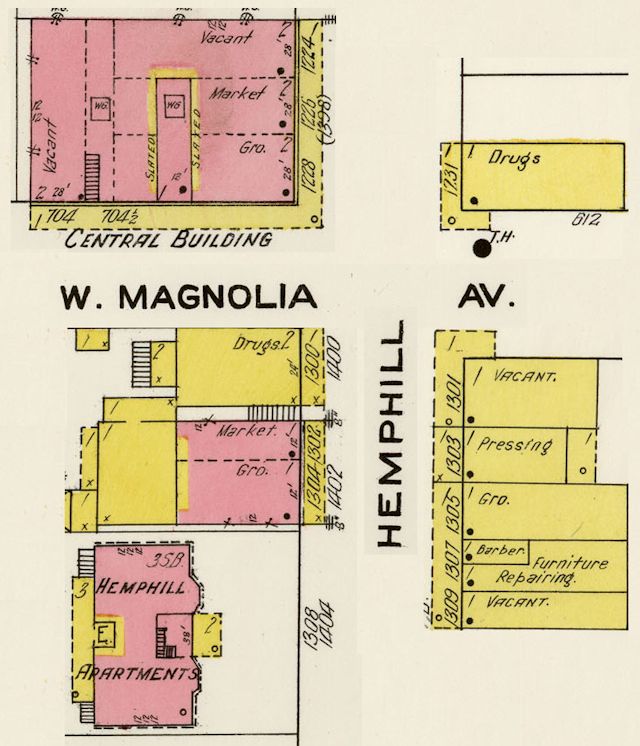 The intersection of West Magnolia Avenue and Hemphill Street in 1910 is typical of the golden age of neighborhood grocery stores: two “markets” and three “groceries.”
The intersection of West Magnolia Avenue and Hemphill Street in 1910 is typical of the golden age of neighborhood grocery stores: two “markets” and three “groceries.”
 There had been at least one grocery store on that corner since at least 1907. William Burts La Cava, whose Magnolia Grocery was at 1226 Hemphill Street, would leave his imprint on that intersection. During sixty years he would live there, own lots there, operate grocery stores and a dry cleaners there, and build his La Cava Building there.
There had been at least one grocery store on that corner since at least 1907. William Burts La Cava, whose Magnolia Grocery was at 1226 Hemphill Street, would leave his imprint on that intersection. During sixty years he would live there, own lots there, operate grocery stores and a dry cleaners there, and build his La Cava Building there.
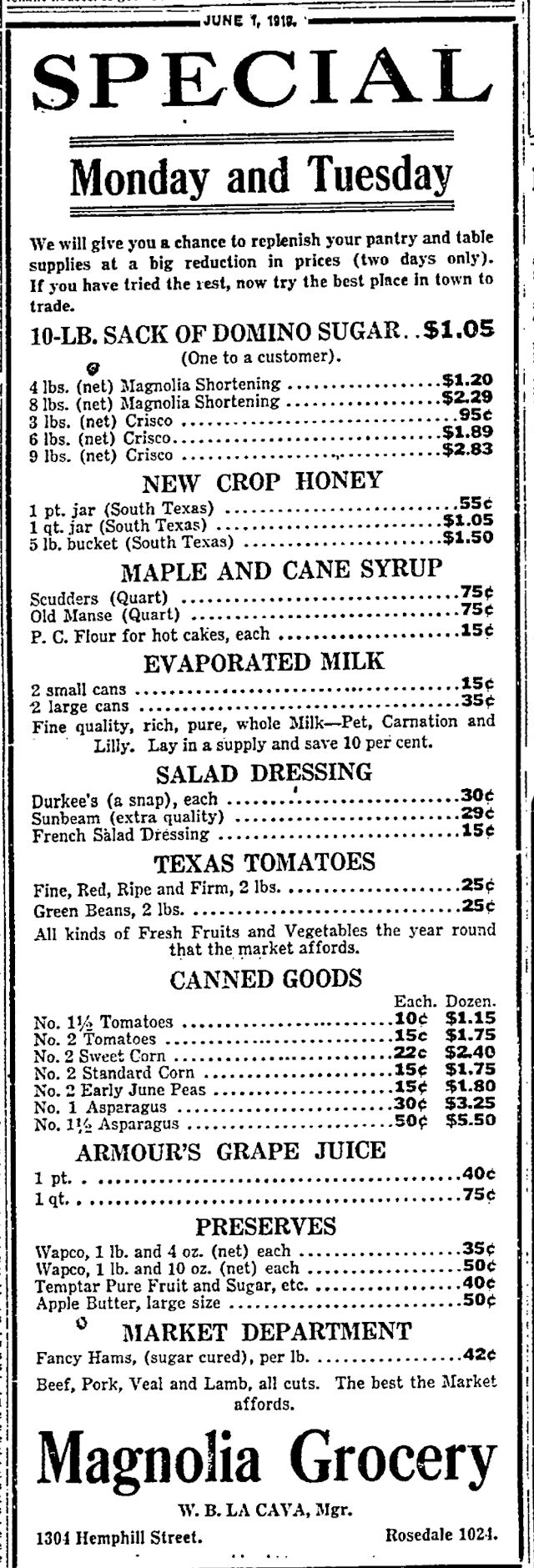 From 1909 through 1919 La Cava’s store was located at 1304 Hemphill Street.
From 1909 through 1919 La Cava’s store was located at 1304 Hemphill Street.
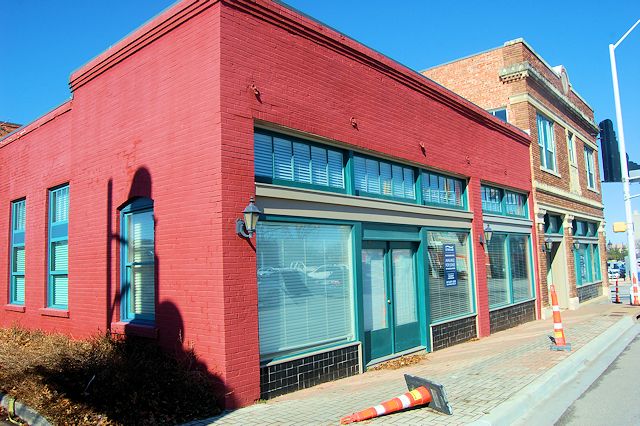 1302-04 Hemphill Street today. Next door on the corner is the La Cava Building.
1302-04 Hemphill Street today. Next door on the corner is the La Cava Building.
 In 1920 the building at 1304 Hemphill Street would house one of Fort Worth’s first Piggly Wiggly stores. Granted, Piggly Wiggly stores were part of a chain, but they were small stores (by today’s standards) located in neighborhoods.
In 1920 the building at 1304 Hemphill Street would house one of Fort Worth’s first Piggly Wiggly stores. Granted, Piggly Wiggly stores were part of a chain, but they were small stores (by today’s standards) located in neighborhoods.
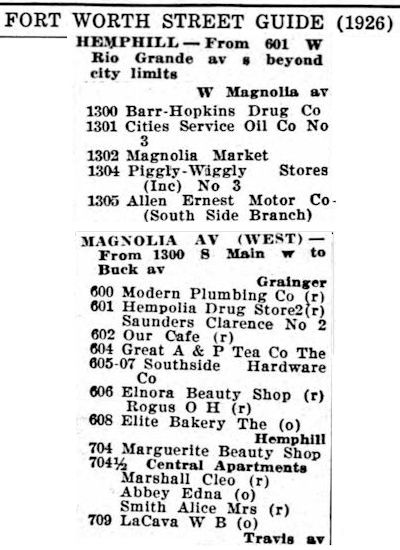 Now let’s stand at that busy Hemphill-Magnolia intersection in 1920 and fast-forward six years. By 1926 the intersection has four grocery stores (and the South Side branch of Ernest Allen Motor Company): Magnolia Market at 1302 Hemphill, Piggly Wiggly at 1304 Hemphill, Clarence Saunders at 601 West Magnolia, and A&P at 604 West Magnolia.
Now let’s stand at that busy Hemphill-Magnolia intersection in 1920 and fast-forward six years. By 1926 the intersection has four grocery stores (and the South Side branch of Ernest Allen Motor Company): Magnolia Market at 1302 Hemphill, Piggly Wiggly at 1304 Hemphill, Clarence Saunders at 601 West Magnolia, and A&P at 604 West Magnolia.
“Who,” you may ask, “was Clarence Saunders?”
Clarence Saunders had founded the Piggly Wiggly chain but was forced out of the company and then founded a competing chain.
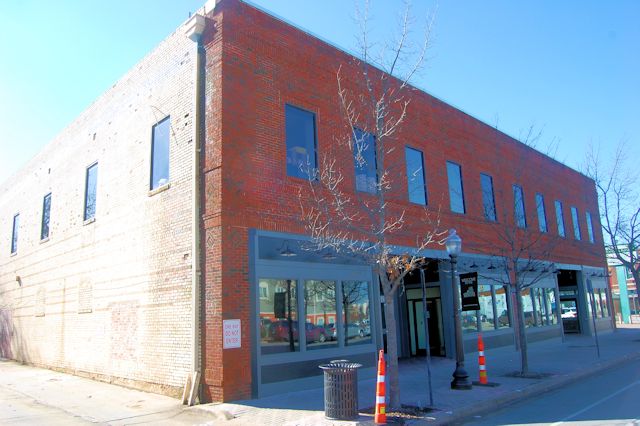 Clarence Saunders store no. 2 at 601 West Magnolia Avenue was in this building, just around the corner from Piggly Wiggly no. 3.
Clarence Saunders store no. 2 at 601 West Magnolia Avenue was in this building, just around the corner from Piggly Wiggly no. 3.
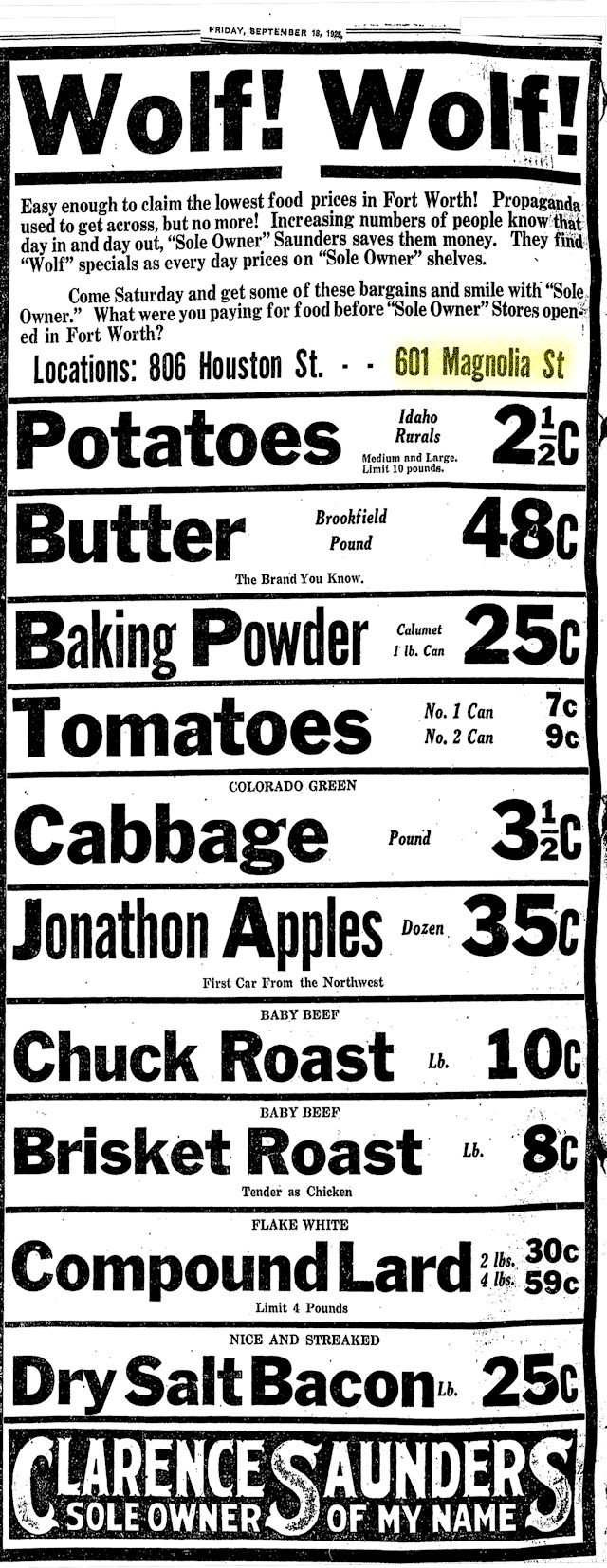
The official name of the store: “Clarence Saunders Sole Owner of My Name.”
Catchy, eh?
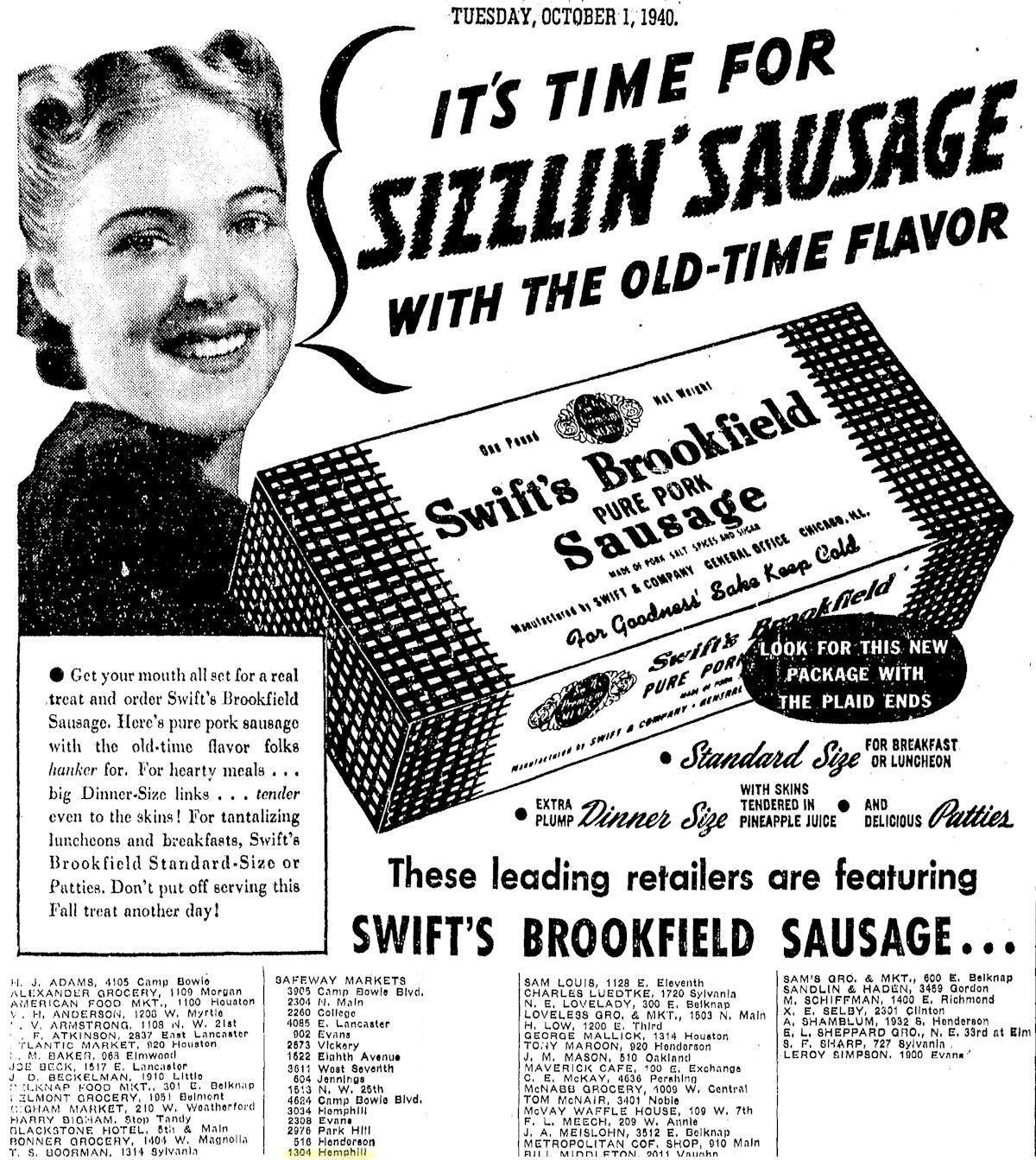 Meanwhile, back around the corner at 1304 Hemphill Street, by 1940 that building would house a Safeway market.
Meanwhile, back around the corner at 1304 Hemphill Street, by 1940 that building would house a Safeway market.
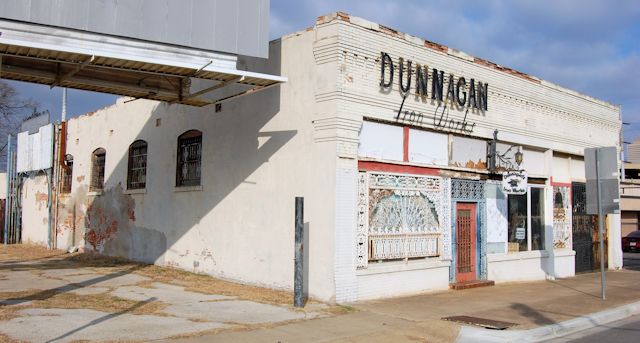 Also on the near South Side, this building, dating to 1913, is at 526 Jennings Avenue. When you see a small building of this age in the inner city, it probably has been a grocery store at least once in its long career. This building housed a grocery store from 1913 to 1937.
Also on the near South Side, this building, dating to 1913, is at 526 Jennings Avenue. When you see a small building of this age in the inner city, it probably has been a grocery store at least once in its long career. This building housed a grocery store from 1913 to 1937.
On the north wall of the building is a ghost sign for Bewley’s Best flour.
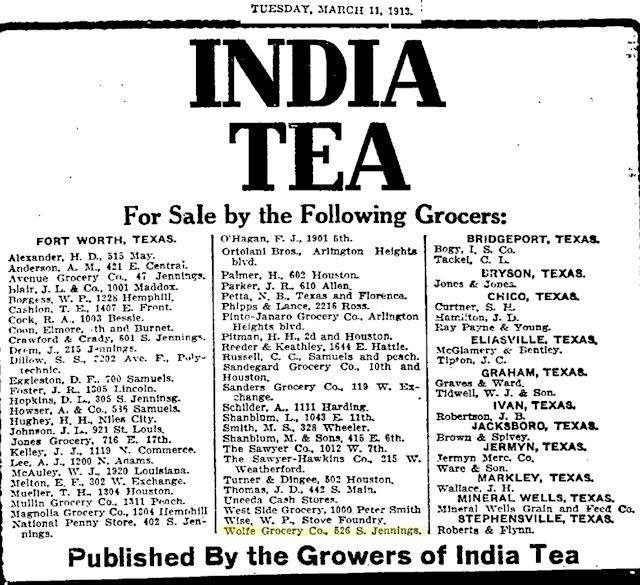 The first grocer at 526 Jennings Avenue was John E. Wolfe, who may have built the building.
The first grocer at 526 Jennings Avenue was John E. Wolfe, who may have built the building.
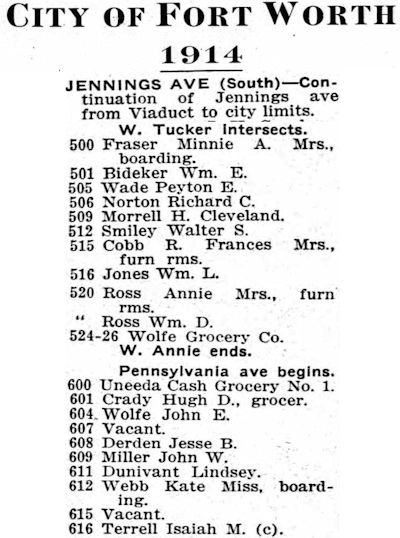 In 1914 Wolfe’s grocery was one of three on that corner. Wolfe lived nearby at 604 Jennings. Note that at 501 was Fire Chief William E. Bideker and at 616 was educator Isaiah Milligan Terrell.
In 1914 Wolfe’s grocery was one of three on that corner. Wolfe lived nearby at 604 Jennings. Note that at 501 was Fire Chief William E. Bideker and at 616 was educator Isaiah Milligan Terrell.
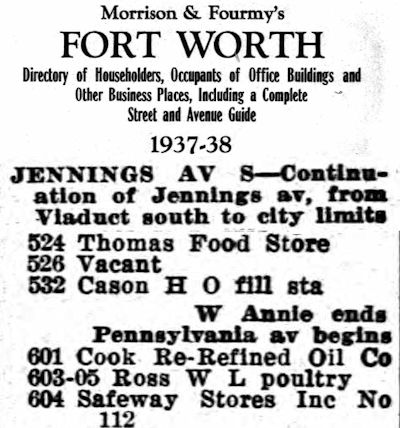 In 1937 Thomas Food Store was the last grocery to occupy the duplex building at 526 Jennings Avenue. At various times all or part of the building housed a “furniture hospital,” furniture store, printing company, auto repair, cleaners, and plumbing business.
In 1937 Thomas Food Store was the last grocery to occupy the duplex building at 526 Jennings Avenue. At various times all or part of the building housed a “furniture hospital,” furniture store, printing company, auto repair, cleaners, and plumbing business.
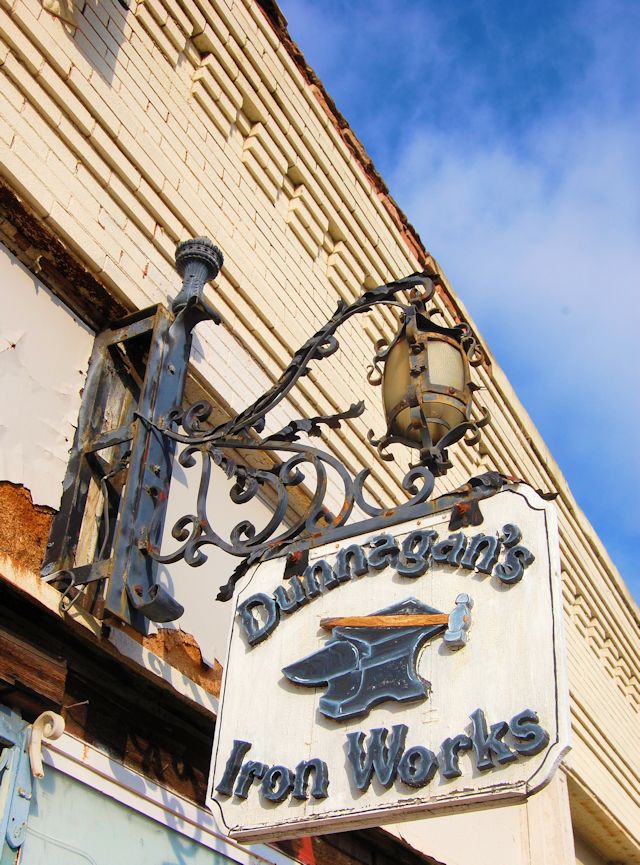 In the 1960s the Dunnagan family moved its iron works into the building.
In the 1960s the Dunnagan family moved its iron works into the building.
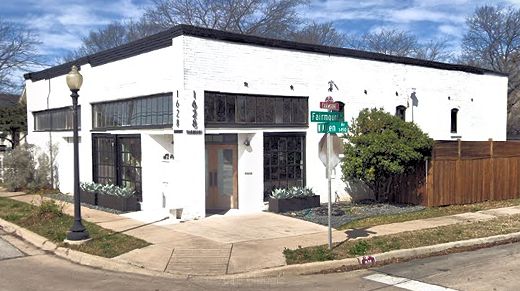 Also on the near South Side, at the corner of West Allen and Fairmount streets this building (1912) housed a grocery store for at least fifty years.
Also on the near South Side, at the corner of West Allen and Fairmount streets this building (1912) housed a grocery store for at least fifty years.
 For many of those years this sign for Boswell’s ice cream stood outside. I am told that the sign is now inside the building, which now houses a ministry.
For many of those years this sign for Boswell’s ice cream stood outside. I am told that the sign is now inside the building, which now houses a ministry.
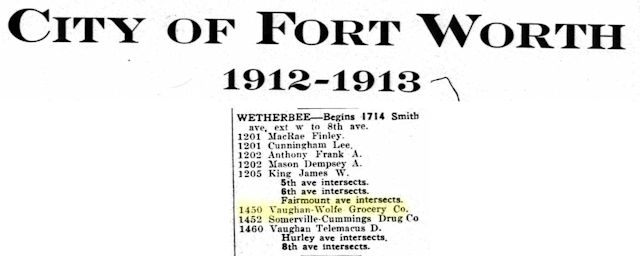

In 1912 the building was home to Vaughn & Wolf Grocery Company, which sold Butter-Nut Bread. (Wetherbee Street was renamed “Allen Avenue” in 1923 after the city annexed several suburbs in 1922, resulting in hundreds of duplicate street names.)
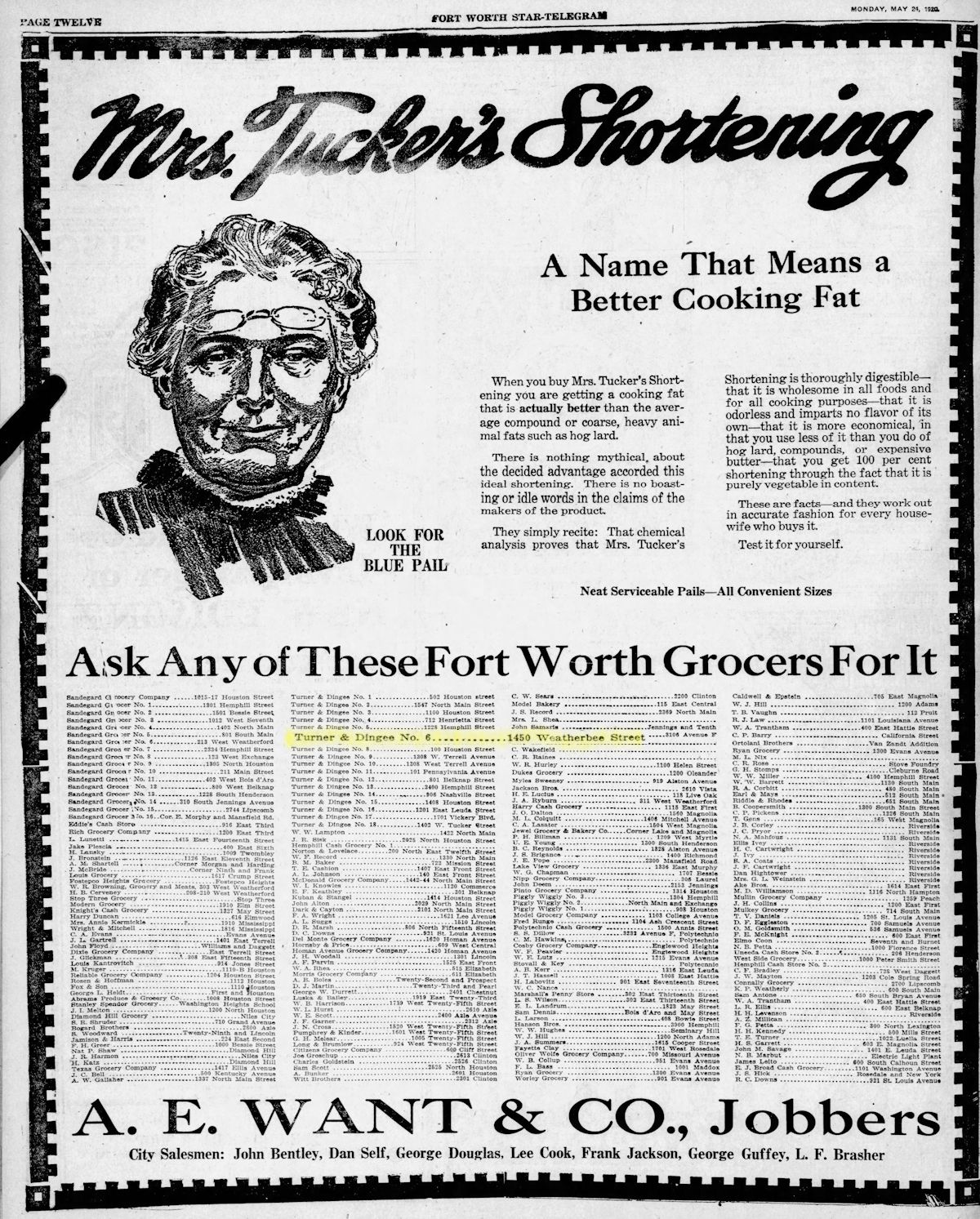
By 1920 the building housed Turner & Dingee store no. 6, which sold Mrs. Tucker’s Shortening.
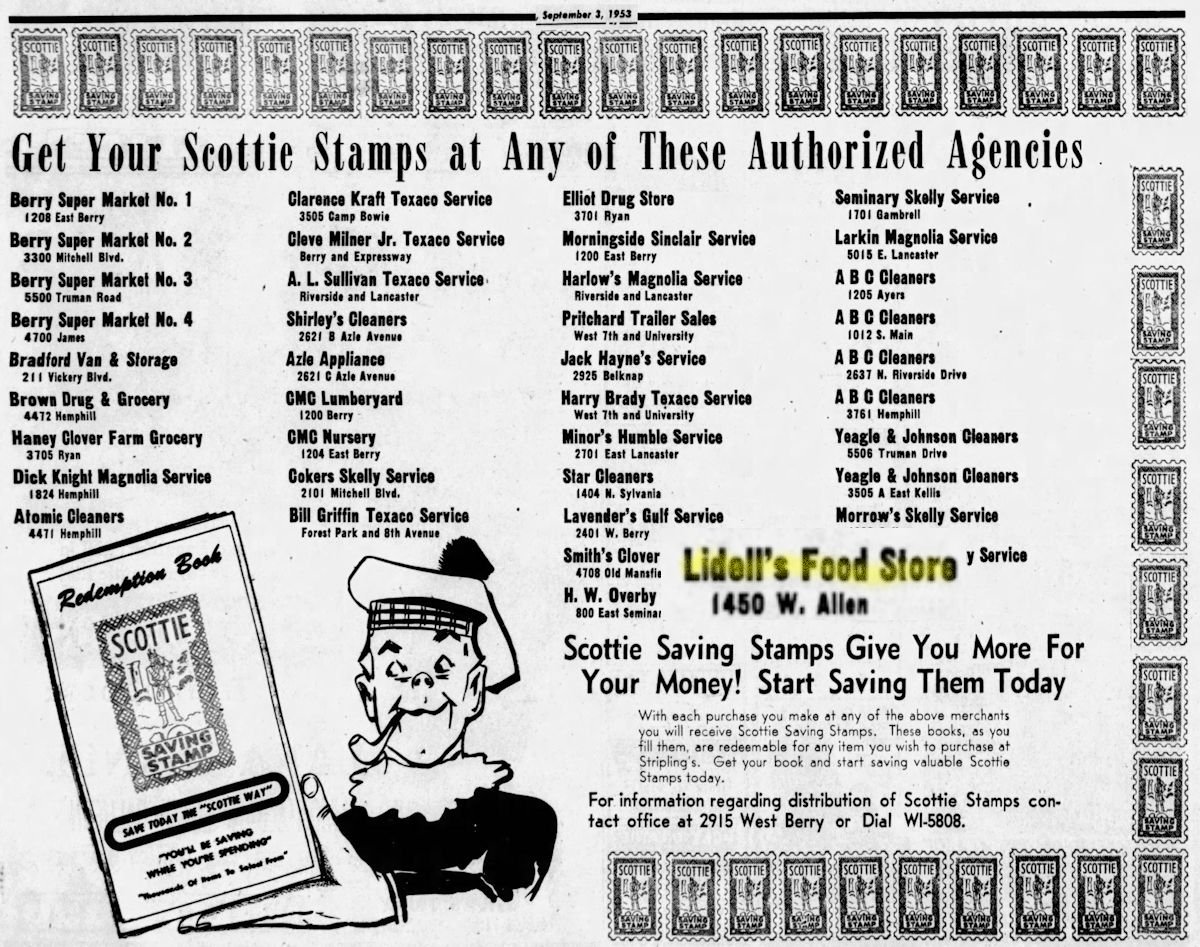
By 1953 the building housed Lidell’s Food Store, which gave Scottie saving stamps.
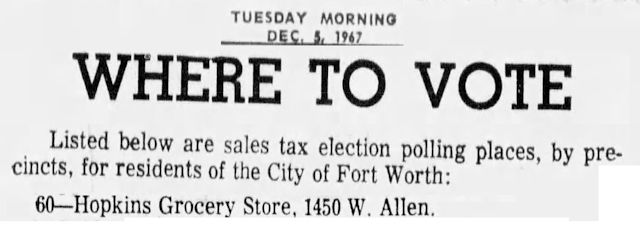
And by 1967 you could shop—and vote—at Hopkins Grocery Store. (Thanks to Terry Valderas for the reminder.)
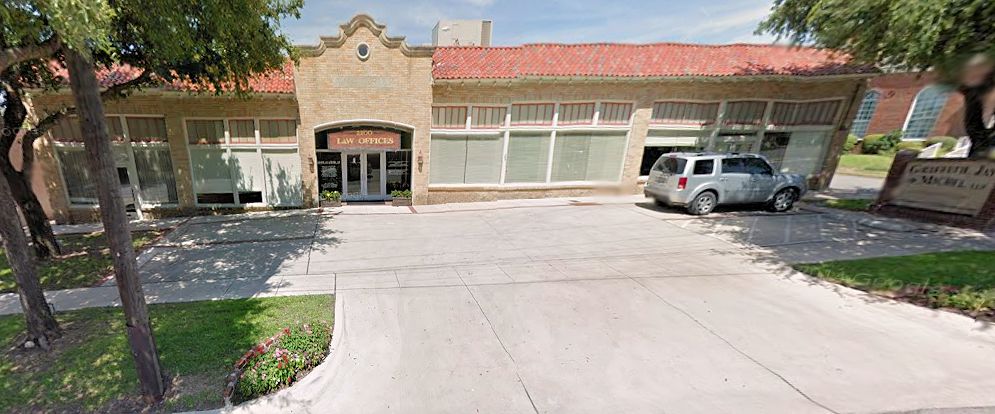
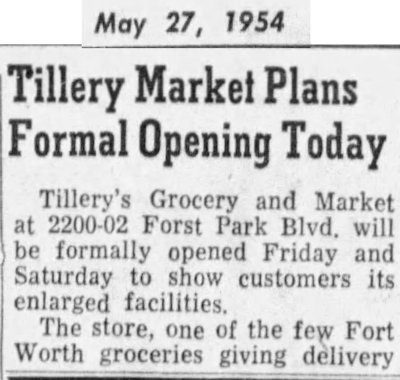
Robert Tillery’s grocery store on Forest Park Boulevard just east of the zoo opened in 1954 and was a neighborhood institution for more than twenty. Tillery previously had operated a store on East Rosedale Street.
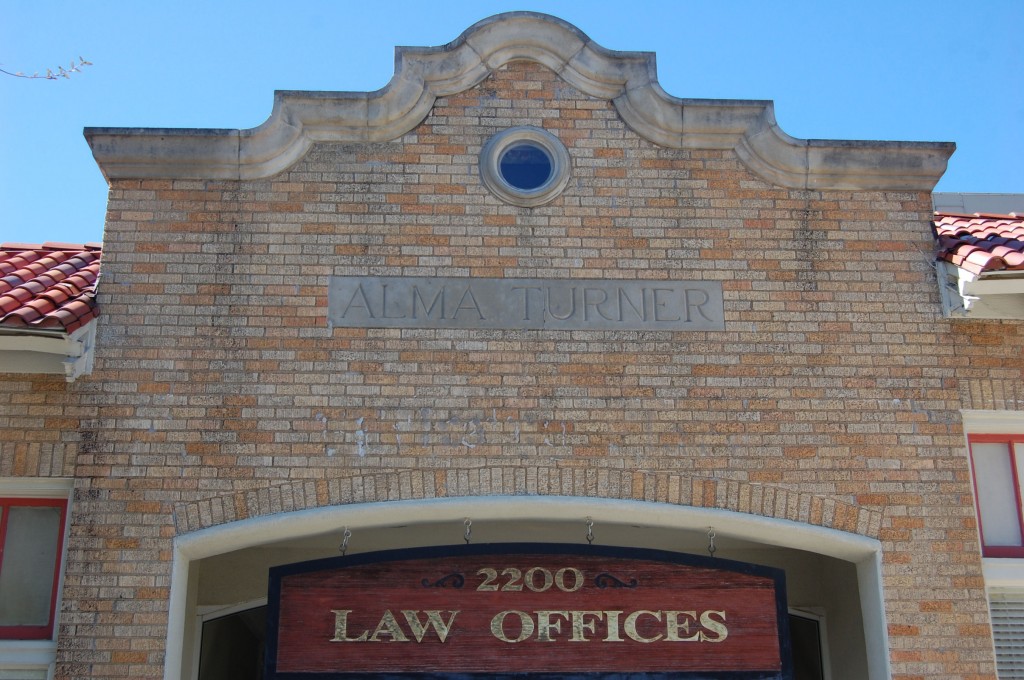 Tillery’s store was in the Alma Turner Building, which was built in 1929 by Ida Turner, a former Fort Worth postmistress, who named the building for her debutante daughter. The first occupants of the building were Renfro’s drugstore no. 16 and Piggly Wiggly store no. 9. It now houses law offices.
Tillery’s store was in the Alma Turner Building, which was built in 1929 by Ida Turner, a former Fort Worth postmistress, who named the building for her debutante daughter. The first occupants of the building were Renfro’s drugstore no. 16 and Piggly Wiggly store no. 9. It now houses law offices.

Tillery’s Grocery closed in 1978. Robert Tillery died in 1990.
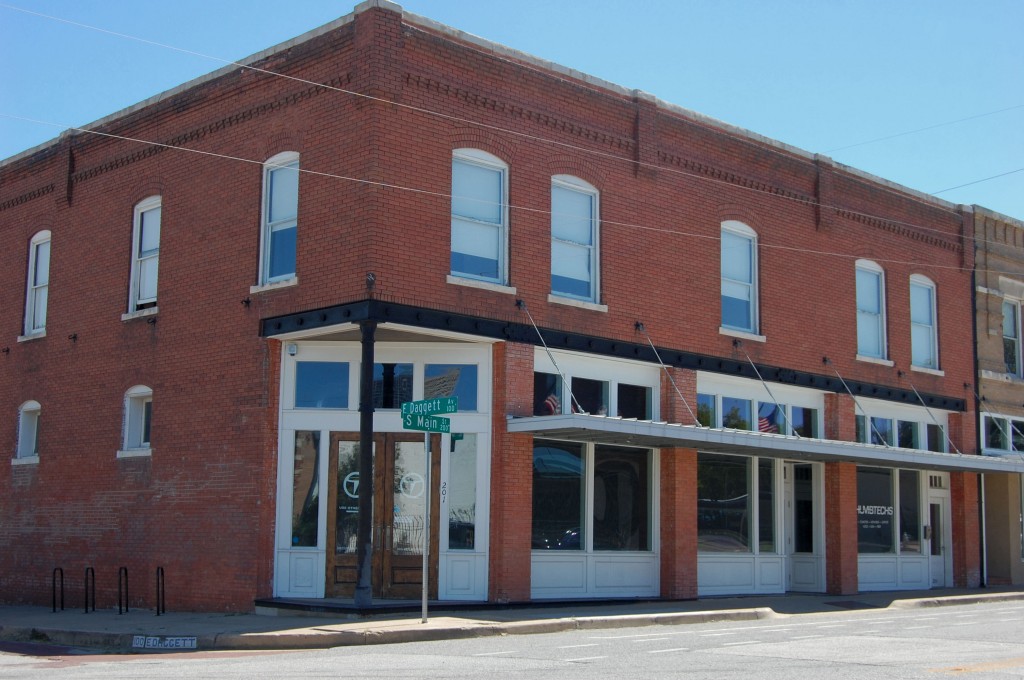 Henry Sawyer built this building on South Main at Daggett Street as a grocery store in 1909 after the great South Side fire of that year destroyed his previous building. He operated a grocery there into the early 1920s.
Henry Sawyer built this building on South Main at Daggett Street as a grocery store in 1909 after the great South Side fire of that year destroyed his previous building. He operated a grocery there into the early 1920s.
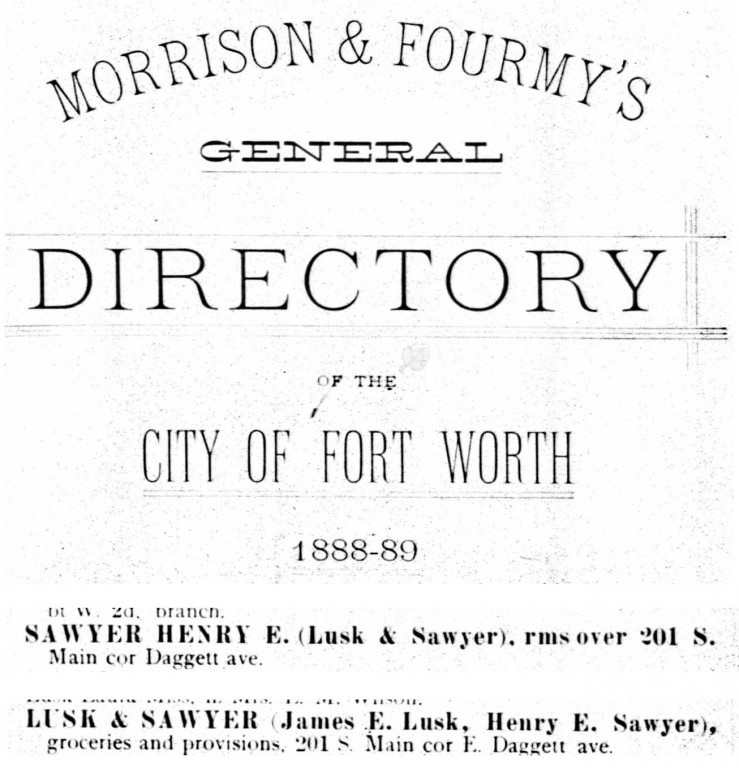 By 1888 Sawyer already was operating a grocery store and living at that 201 South Main location.
By 1888 Sawyer already was operating a grocery store and living at that 201 South Main location.
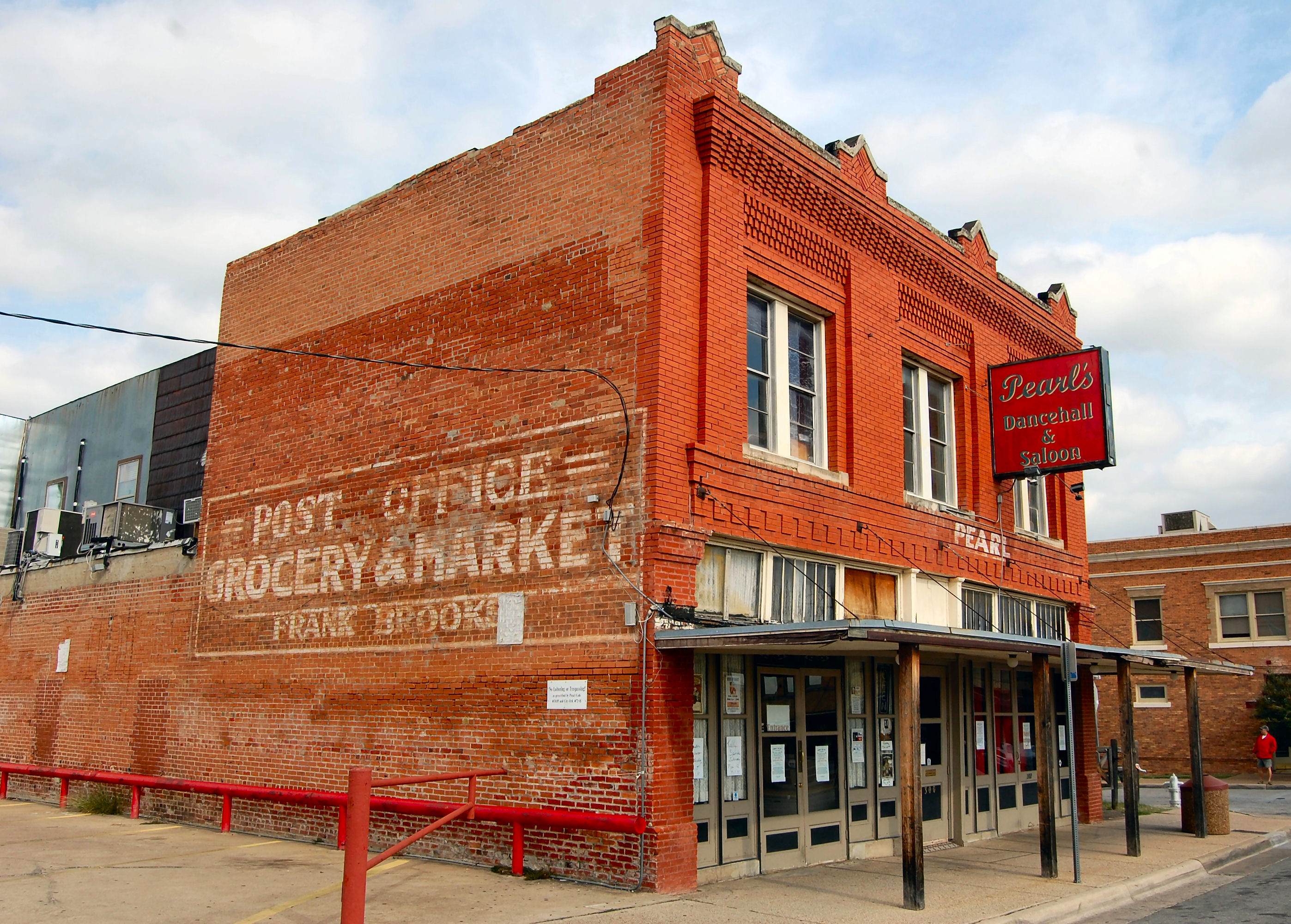 As the ghost sign shows, this building (1909) on West Exchange Avenue near the stockyards was Frank Brooks’s grocery store. The building now houses Pearl’s Dancehall & Saloon.
As the ghost sign shows, this building (1909) on West Exchange Avenue near the stockyards was Frank Brooks’s grocery store. The building now houses Pearl’s Dancehall & Saloon.
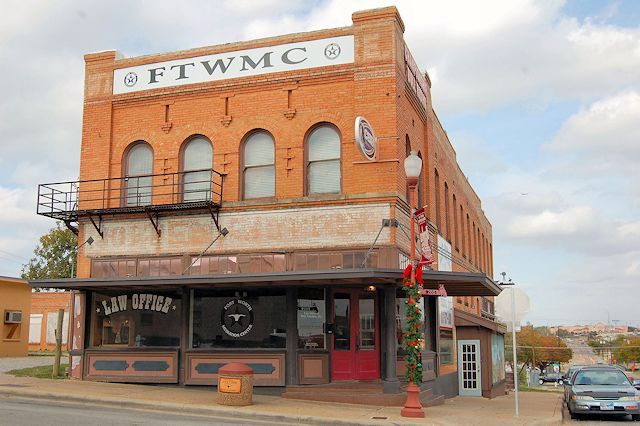 Also on West Exchange Avenue, this building (1908) yoostabe the grocery of James F. Dill.
Also on West Exchange Avenue, this building (1908) yoostabe the grocery of James F. Dill.
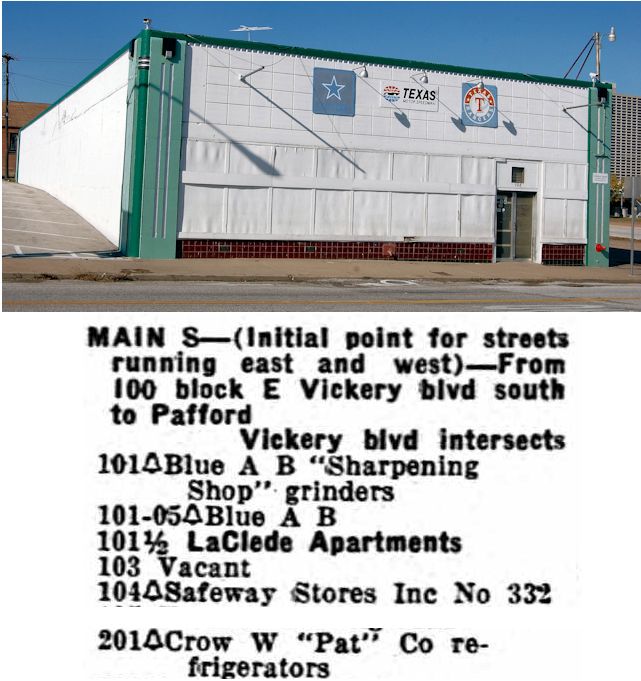 Chain supermarkets were smaller than they are today and served an immediate neighborhood. For example, one block north of the Sawyer Building at 104 South Main was Safeway store no. 332 in the 1940s. The 1945 city directory shows that Henry Sawyer’s building at 201 South Main now housed Pat Crow.
Chain supermarkets were smaller than they are today and served an immediate neighborhood. For example, one block north of the Sawyer Building at 104 South Main was Safeway store no. 332 in the 1940s. The 1945 city directory shows that Henry Sawyer’s building at 201 South Main now housed Pat Crow.
 The building that houses the venerable Paris Coffee Shop at 704 Magnolia Avenue once was Safeway store no. 335. The fronts of these two Safeway buildings originally were nearly identical.
The building that houses the venerable Paris Coffee Shop at 704 Magnolia Avenue once was Safeway store no. 335. The fronts of these two Safeway buildings originally were nearly identical.
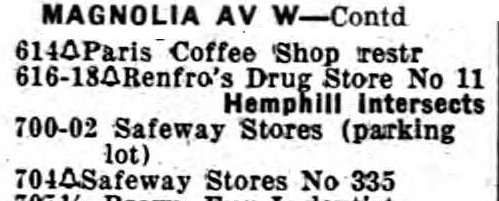 The coffee shop in 1945 was east of Hemphill at 614 Magnolia Avenue.
The coffee shop in 1945 was east of Hemphill at 614 Magnolia Avenue.
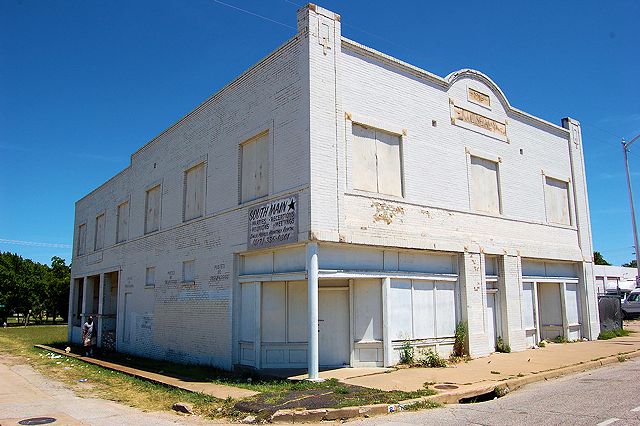 A century ago the Sealy Building at 801 South Main housed the grocery store of Alex J. Sandegard (see 1920 list in Part 2).
A century ago the Sealy Building at 801 South Main housed the grocery store of Alex J. Sandegard (see 1920 list in Part 2).
 This building on the near South Side is on May Street, but the main house (in right background) faces West Leuda. The house was built in 1910 by brick contractor William Graham as his own residence.
This building on the near South Side is on May Street, but the main house (in right background) faces West Leuda. The house was built in 1910 by brick contractor William Graham as his own residence.
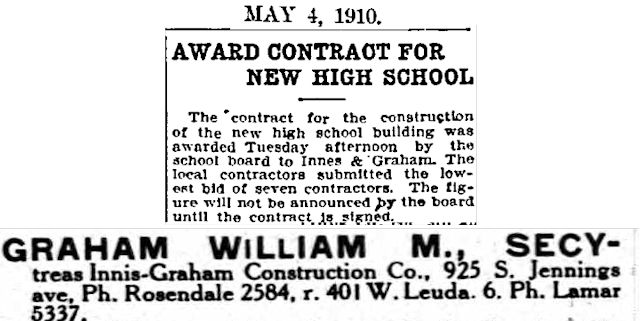 Graham was secretary-treasurer of Innes-Graham Construction Company, which built the new Fort Worth High School on Jennings Avenue. The first high school would burn in December of that year.
Graham was secretary-treasurer of Innes-Graham Construction Company, which built the new Fort Worth High School on Jennings Avenue. The first high school would burn in December of that year.
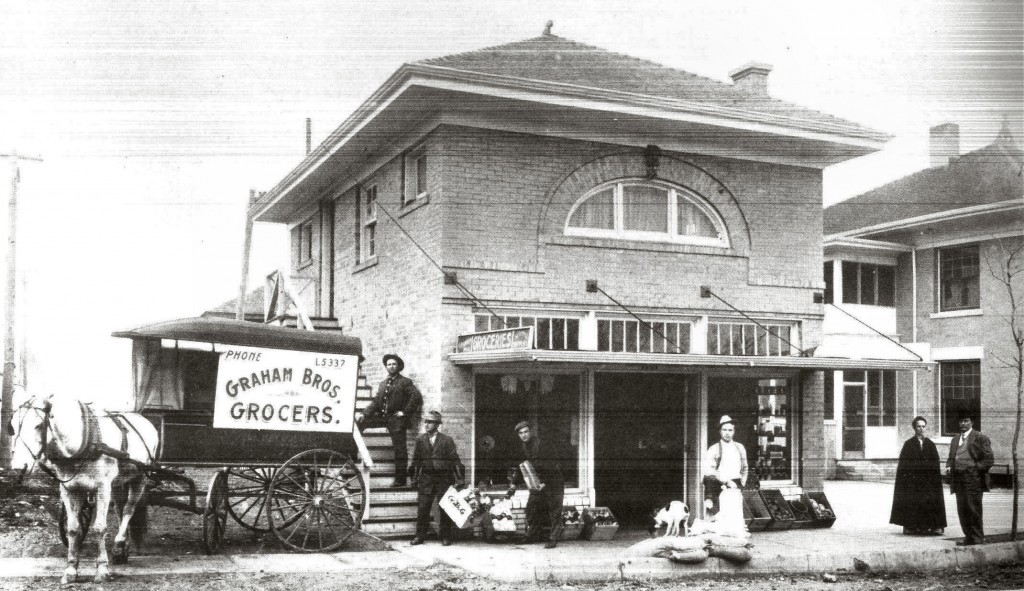 About 1920 the Graham outbuilding was converted to house Graham Bros. grocery store. The outbuilding originally was a garage. (Photo from Amon Carter Museum.)
About 1920 the Graham outbuilding was converted to house Graham Bros. grocery store. The outbuilding originally was a garage. (Photo from Amon Carter Museum.)
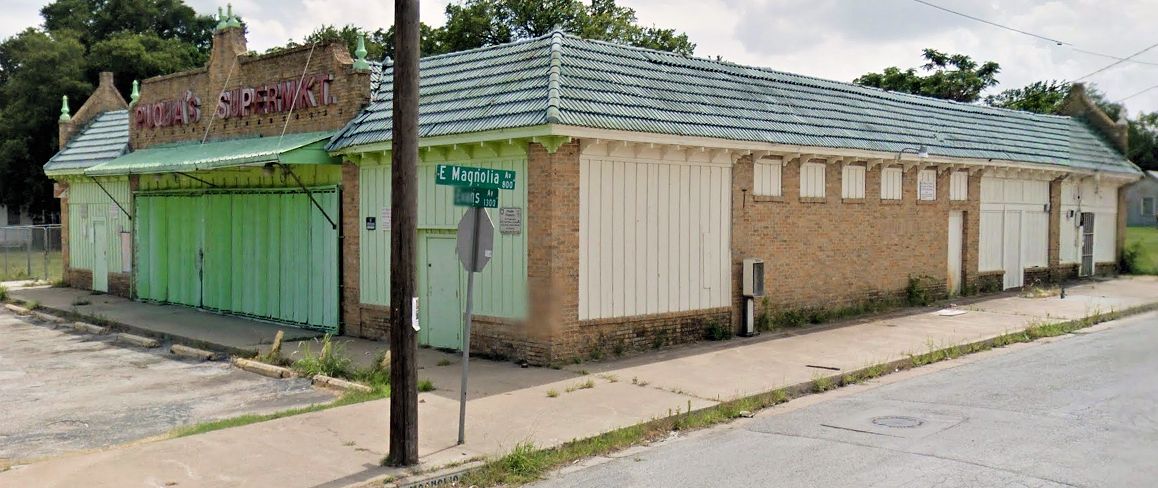 This building (1928) yoostabe Fuqua’s Supermarket on Evans Avenue.
This building (1928) yoostabe Fuqua’s Supermarket on Evans Avenue.
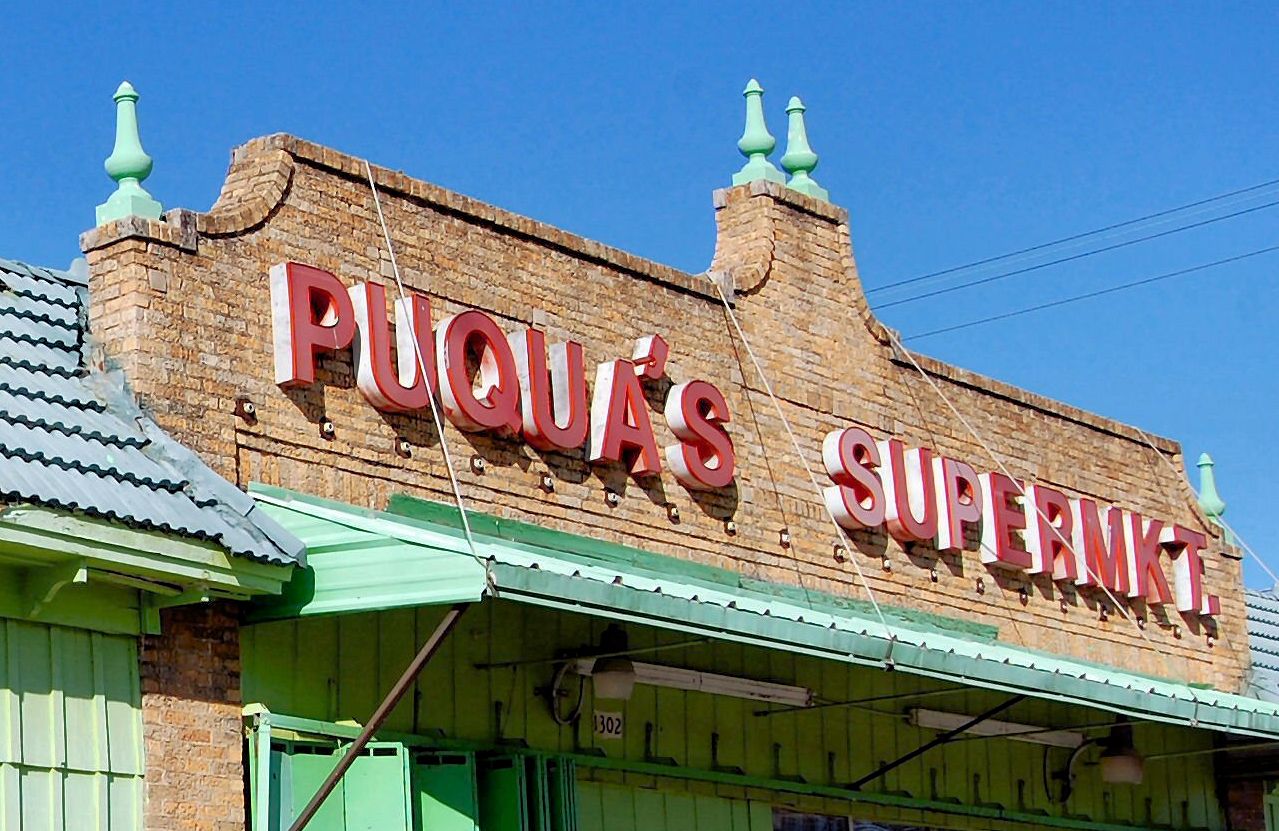 Although the store was owned by Charles and Clarice Fuqua, the sign reads “Puqua.”
Although the store was owned by Charles and Clarice Fuqua, the sign reads “Puqua.”
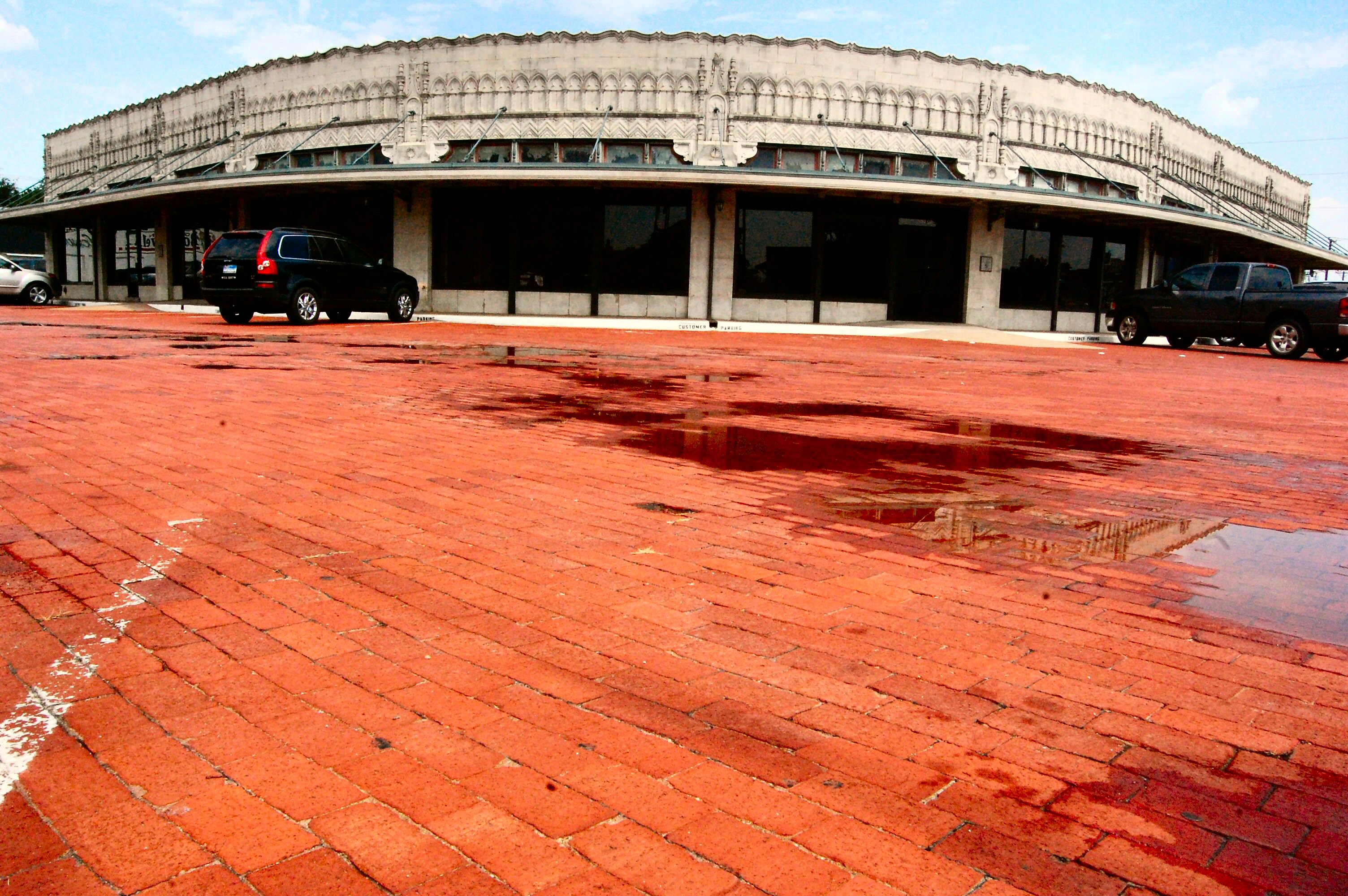 Let’s end Part 1 with a corner grocery on a different kind of corner. Yes, this grand little building (Hedrick, 1929) at 1200 Pennsylvania Avenue and Henderson Street began its long commercial life as a grocery store.
Let’s end Part 1 with a corner grocery on a different kind of corner. Yes, this grand little building (Hedrick, 1929) at 1200 Pennsylvania Avenue and Henderson Street began its long commercial life as a grocery store.
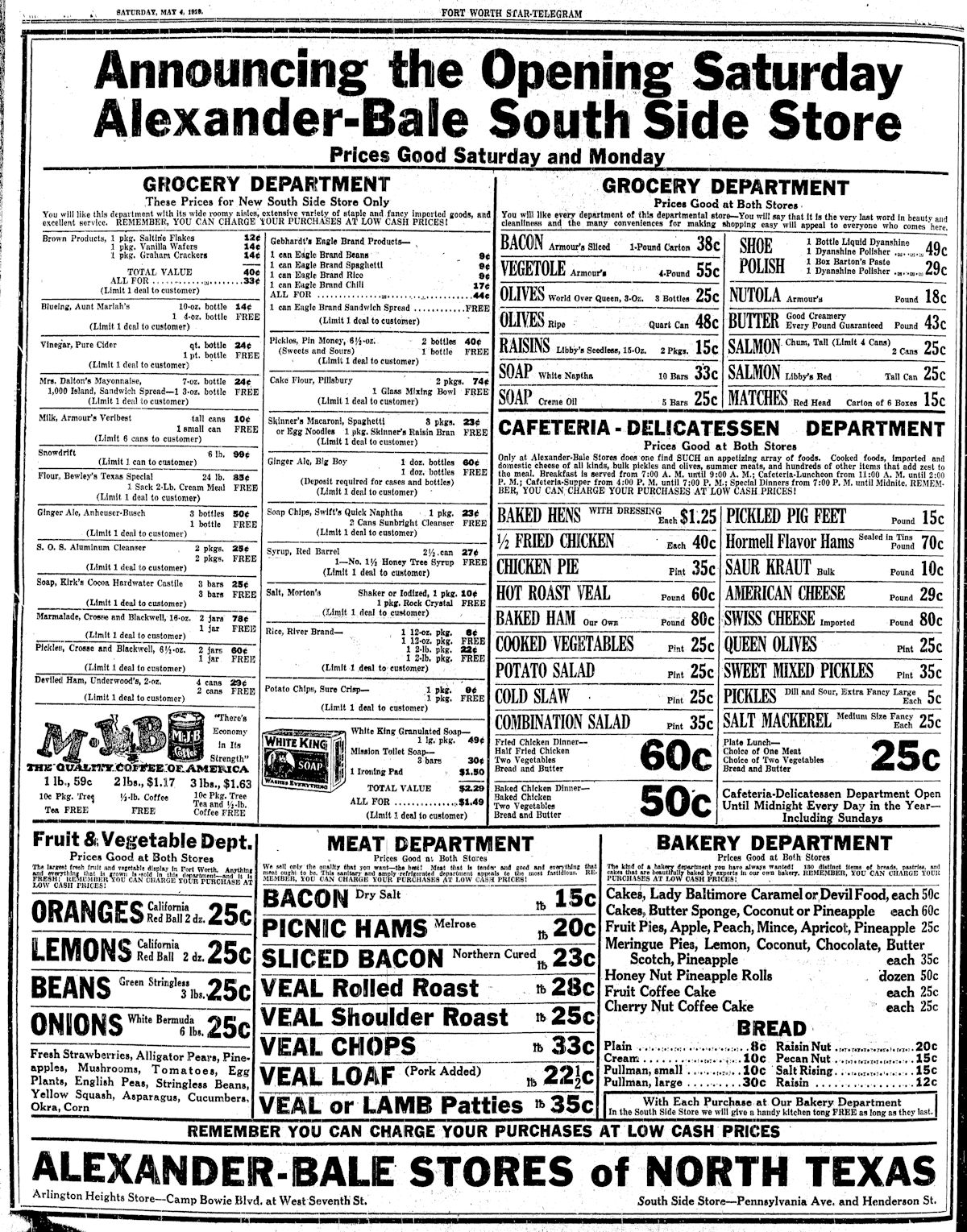 The building opened as Alexander-Bale South Side Store. The building later housed a Helpy-Selfy grocery and Gause-Ware‘s 1879 Room.
The building opened as Alexander-Bale South Side Store. The building later housed a Helpy-Selfy grocery and Gause-Ware‘s 1879 Room.
 The building was designed to conform to the curved intersection of Henderson and Pennsylvania.
The building was designed to conform to the curved intersection of Henderson and Pennsylvania.

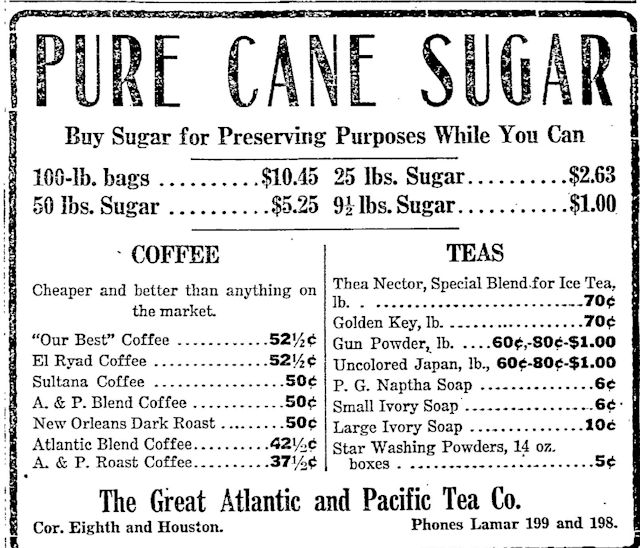
 Even downtown once was a neighborhood. Single-family residences co-existed with commercial buildings well into the twentieth century. Where did residents of the downtown ’hood buy their groceries? Before this building on Houston Street at 8th Street housed Thompson’s Bookstore, it housed an A&P.
Even downtown once was a neighborhood. Single-family residences co-existed with commercial buildings well into the twentieth century. Where did residents of the downtown ’hood buy their groceries? Before this building on Houston Street at 8th Street housed Thompson’s Bookstore, it housed an A&P.
Crave more neighborhood grocery stores of yore?
Cowtown Yoostabes, Corner Edition: Neighborhood Grocery Stores (Part 2)






… About 15 years ago I was working for a marketing company, we were doing a reset for a small independent grocery store in Wichita falls TX…
… It was housed in an old Safeway barrel vaulted building they were putting up everywhere in the early 1960’s, I’m pretty sure the produce fixtures were original to the store…
… I mentioned to one of the owners that the building was identical to the Safeway in Palm springs CA my family shopped at when I was 5 or 6 years old, he was so pleased to give me a :45 tour, inside and out of the entire store, and his family shopped in this same bldg. in 1965 when it was a brand new Safeway store…
… I remember one of the 3 lady’s I was with saying “oh Lord there goes Scott again”, and yes they all took the tour, and reminisced about there Safeway’s in Dallas, Arlington or Weatherford…
… Good times…
My great grandfather owned the Wise and Record grocery store. Apparently it was on Azle street. Does anyone know anything about this store? Thank you!
The store, listed at 2522 and 2523 Azle Avenue and at 3124 Cathridge, appeared in small ads in the Star-Telegram 1927-1933. In 1928 William P. and Mary Wise lived at 1619 Arizona. W. Frank and May Record lived at 2906 Rosen.
My mother shopped Davis grocery off of Berry St. Then when Piggly Wiggley opened on Berry, she divided her shopping between the two. I attended a Mickey and Amanda live show in the parking lot of Piggly Wiggley on their grand opening day. 100 degrees, blacktop lot, tenny shoes melting, and a heat stroke, all to see a felt Possum and a cardboard Mud Turtle.
Now that’s a Fort Worth memory-a grocery store grand opening featuring Mickey and Amanda! I remember an A. L. Davis on East Berry and one on Vaughn, a block from us on Burton Street. And I remember when it was torn down to make way for the Poly Freeway.
I think this is a great website.Very interesting.
Thank you, Billie Cantrell.
Do you remember Mrs. Harlow’s grocery on E. Rosedale? I used to walk there when I was a child to buy penny candy! Love all your memories and history!
Thanks, Sherry. I practically lived in Sycamore Park across the street and along the creek, and we’d buy Topp Colas in that store at 2460 East Rosedale. Topp Colas were 16 ounces but the same price as the 10-ounce soda pops, so we’d buy them.
Tillery’s Grocery Store on Forest Park Blvd was a great independent grocer. Building is still in great condition located on the corner of Forest Park Blvd and Huntington Ln. Home of Griffith, Jay & Michel, LLP.
There must have been hundreds of such small stores at one time and dozens of their buildings still standing. I grew up on the East Side and am personally familiar with only a handful that were in my neighborhood. But as I explore other parts of town I see little buildings that “look” like they could have been a neighborhood store in another life.
Miller and Hanger Grocery persisted into the late 1960s in the 4100 block of Camp Bowie- next to Mott’s. My step-dad’s shop (Vernon’s) was at 4100, and all the stores in that 3-block stretch were the small businesses people needed to live their lives- a grocery, a bakery (Harper’s Bluebonnet), dry cleaners, a small florist’s, a little jeweler, a shoe repair, a hairdresser’s (us!), a barber- and Rockyfeller’s! Now it’s gentrified beyond all comfort, mostly antique stores. A person could starve to death.
I lived in Poly when I was younger, and wore a track between my grandmother’s house and Bransom’s. There was Galloway’s on Wichita, too- catty-corner from Oak Lawn. The building is long gone.
I love your blog, Mike, even if I do get misty, sometimes.
Thanks, Nancy. The older I get, the more my memories of childhood resemble a “Little Rascals” comedy”: Was there ever really such a simple time of small neighborhood grocery stores, lightning bugs, horny toads, muscle-powered lawnmowers, metal roller skates and chalk hopscotch grids on sidewalks, returnable pop bottles, home delivery of milk and bread, the Fort Worth Shopper, the Poly Herald, the Fort Worth Press, and 49-cent turtles at Mott’s?
Crowder is the name! Thanks for correcting me. “Crocker” didn’t sound quite right, I realize. I see in Google Maps that the building seems to have been replaced. Do you happen to know when the Crowder store closed?
Tim, it was still there in the 1971 city directory. That is the latest city directory I have access to.
Loved reading this post! Brought back memories of a small grocery store in Ridglea in the early 60s, near the vicinity of Tex Blvd and Hemsell (a residential neighborhood). Seems like it may have been a converted garage, rather than a more formal structure, and was run by a Mr. Crocker, if memory serves correctly. We called it “Crocker’s Store” and would walk to it occasionally to buy snacks and sodas. I have never found info about it anywhere on the web.
Thanks, Tim. I have wondered if some of the small stores situated on the short side of a residential block beside an alley were converted garages. By the way, there was a Crowder grocery store owned by Albert R. Crowder Jr. at 3316A Olive Place near the area you remember.
In the 40’s and 50’s there were 3 neighborhood groceries in a 300′ span. Hotop’s at 3246 S Adams, Woodall’s at 1008 Shaw and Blue Ribbon “Walter’s” at 1008 Shaw. All structures are still there and in good condition.
It was the same in Poly, Doug, in the 1950s. I don’t know how they competed with each other and with the larger stores such as A. L. Davis, Worth Food Mart, Houlihan’s, and, of course, Buddie’s. Some were no larger than a two-car garage.
I don’t Harlow’s Grocery, Jack and Florence Elizabeth Harlow. 2460 E. Rosedale, in Poly?
Thaddeus, I remember Harlow’s. As a kid I bought sixteen-ounce Topp Cola sodas there when playing baseball at Sycamore Park. When it comes to any aspect of Fort Worth history, space (and limited reader interest) always makes any sampling incomplete.
I lived on Crouch St., about a block from the A. L Davis store. It was just across the street (then Tarrant Road) from what I think was a YMCA at the corner of Edgewood Terrace and Tarrant road.
Walking to the store was high adventure for me in the 50’s.
Michael, I remember my family shopping at that A. L. Davis, probably as we were going to the family farm south of Arlington before the lake was built.
Hi Mike. Thanks, brought back many memories. I spent my middle school to high school years at that store on Wichita St. Mom (and sometimes dad when he wanted to check out the meat department) would shop there for our daily bread (unless mom made tortillas, ha). Sometimes a cute cashier would be working and I would go in, but mostly I waited in the car for what seemed forever (mom liked getting out of the house)
I was not in that store often, but for some reason I associate it with Gerry Elser, a big guy I played East Side baseball with. He probably went to Forest Oak. I musta seen him in that store once.